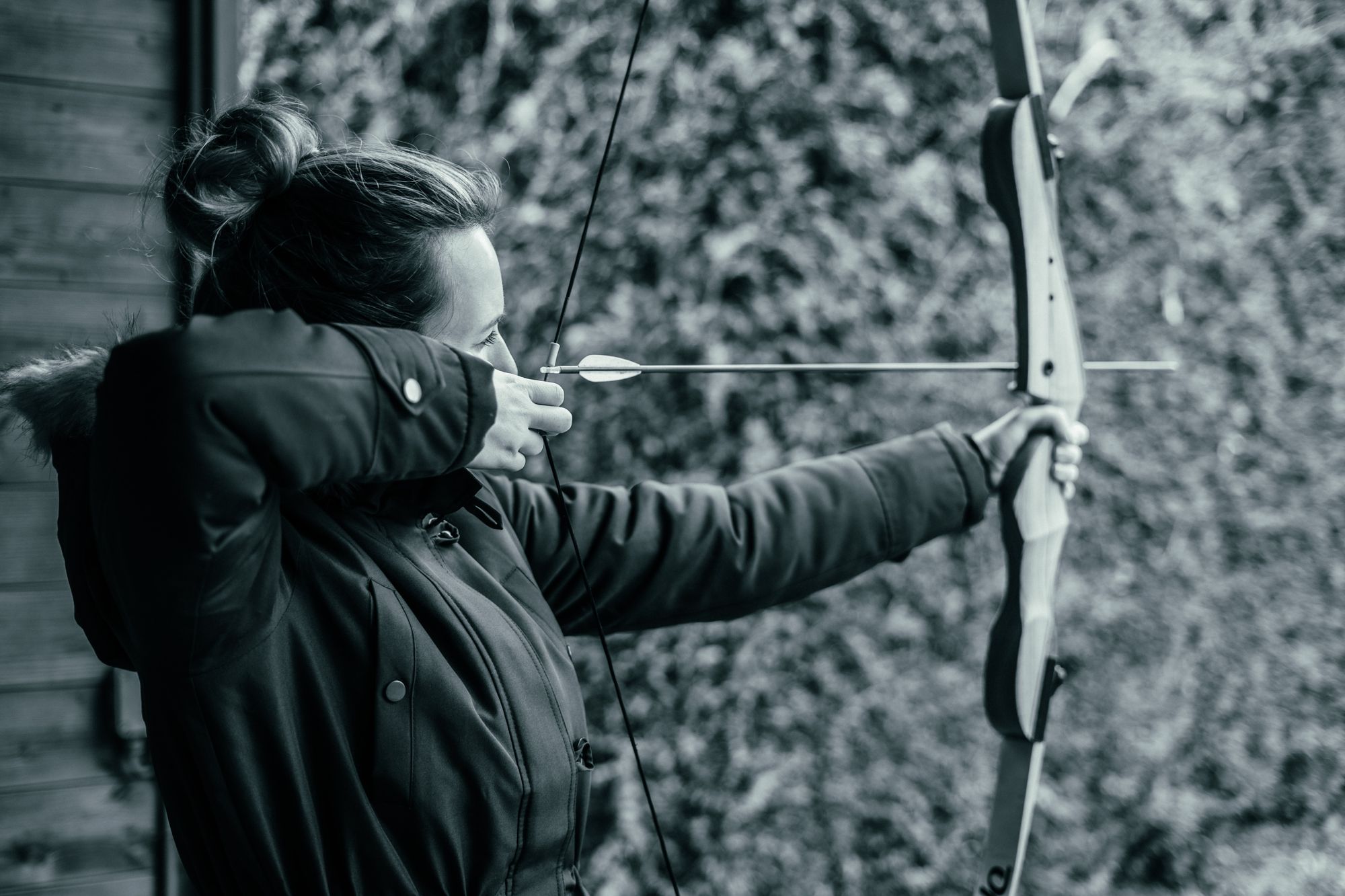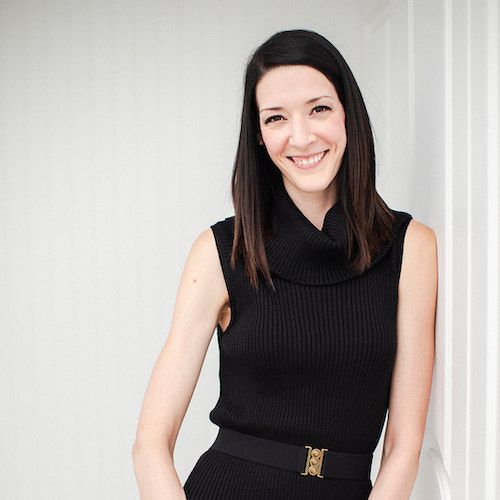Take Aim: How To Reflect, Set Direction, and Make Progress In The Year Ahead
Set your course for the year ahead by focusing on processes, not outcomes.

As 2022 winds down, attention is shifting to 2023 and the possibilities a new year offers. You might be planning a new years resolution, jotting down goals for the year in your notebook, or busting out OKRs (Objectives and Key Results) or SMART goals (Specific, Measurable, Achievable, Relevant, and Time-Bound).
While there is nothing wrong with these approaches, they are primarily outcome-focused. They measure success based on metrics and climbing a ladder, often set by someone else. For some (including me), these feel arbitrary and unmotivating.
An alternative approach is to shift from being outcome-focused to being process-focused. Anne-Laure Le Cunff of Ness Labs framed it as,
“where aims matter more than goals, and where success is the process itself”.
She uses an archery metaphor to say:
“In life, like in archery, the goal is the target we want to achieve, while the aim is the course we set to reach that target. A goal fixates on the finish line, while an aim considers the trajectory. When we focus on our aims, the process becomes the goal. And we’re more likely to reach our goal when we become fully aware of our aim.”[1]
If we follow the archery metaphor, there are three pieces to set the foundation for the next year:
- Check your bow: What can you learn from the past year?
- Plant your feet: What’s the target's general direction?
- Take aim: What processes will you put in place to move you in the right direction?
Let’s break these down!
1. Check your bow: What can you learn from the past year?
An annual reflection is a great way to get clarity on how you ended up where you are today. If it’s not where you want to be, you can look back to understand why and figure out what you will do differently going forward. If it is where you want to be, you can make decisions about what you will continue and what new opportunities you want to explore.
Last year I wrote a guide on How To Do an Annual Reflection to Get The Most Out Of The Year Ahead.
It covers:
- Why reflection is important
- What reflection is not
- How to do an annual reflection
The high level of how to do an annual reflection is:
1. Review your data sources from the past year.
These data sources might include:
- Calendar
- Journal
- Daily reflection
- Quarterly goal setting
- Annual strategic plans
- Performance reviews
- Emails
2. Make a list of the months and mark down anything you find notable
These things could be anything that was important or impactful to you or your life:
- Travel and vacations
- Significant family or friend events like weddings or funerals
- Business-related things like awards, promotions, hiring, firing
- Large purchases or moving
- Concerts, sports games
- Prominent happenings for your partner or kids
- Anything significant related to fitness or your hobbies
3. Make note of any patterns you notice and think about:
- What language did you use to describe things?
- What came up over and over?
- What are you proud of?
- What was more difficult than you expected?
- What do you wish you had done differently?
- What things happened that surprised you?
- What are you grateful for?
- Add any additional reflections.
You can read the whole article for more details.
Once you have your reflections then you can use them check your bow: is it the one you want to use in the new year? Does it need to be sanded, oiled, or restrung, or does it feel right?
Example annual reflection
An example of the end result of going through the process I outline is My 2021 Annual Reflection: Languishing, Flourishing, Momentum, and a Hard Loss.

2. Plant your feet: What’s the target's general direction?
With all the information you get from your annual reflection, you can now decide what direction you are looking towards and where you want to plant your feet.
Though this can be applied to goal setting, I often frame this process as setting a theme.
I came across the concept of themes around the start of the pandemic and wrote about it in my article, Planning in Uncertain Times: Try Themes, Not Goals. I define a theme as “a guiding principle, an overarching outcome to work towards. It is different from more traditional goals in that it is less specific and doesn’t have a success/fail parameter. It is more of a north star than a specific path”.
While things are more certain (ish) these days, setting themes is something I continue to do now. For example, my theme from 2022 was: Keep it going, Keep it steady. It was about maintaining the momentum I had created for myself near the end of 2021.
My reflection on that theme and 2022 is in the works, but coming soon!
To set your theme (or even more concrete goals if that’s your jam) look back on your reflections and ask yourself:
- What are the common threads?
- What do I want to keep doing?
- What do I want to change or stop doing?
- What do I want to start doing?
- Who do I want to spend more time with?
- Who do I want to spend less time with?
With your answers to these questions, you can plant your feet and look toward the horizon.
3. Take aim: What processes will you put in place to move you in the right direction?
Your bow is ready, your feet are planted, and you are facing the right direction. Now you can take aim by deciding what processes you will put in place.
Last year I wrote Set Direction with Goals, Make Progress with Systems. It follows a similar idea as Anne-Laure Le Cunff’s article by setting the stage of prioritizing systems over outcomes. It just doesn’t have the archery metaphor. 😉
We both reference James Clear in our articles, who frames it:
“It is not the target that matters. It is not the finish line that matters. It is the way we approach the goal that matters. Everything is aiming.”
To help establish your processes, consider the following questions:
1. Who can help or support me?
There are some habits and routines that are easier to establish and stick to if you have someone else doing them alongside you or acting as an accountability partner.
For example, I have a client that recently realized that the only way she consistently stayed active was if she took classes or worked with a trainer. There has to be another person expecting her to show up for her to be motivated.
In a professional context, you might ask a mentor or hire a coach or consultant (like me!😁) to meet with you on a regular basis to help you keep yourself accountable.
2. What is the smallest step I can take to start?
Starting something can be the biggest hurdle to overcome when you decide you set your direction. It’s easy to fall into the trap of overplanning and trick yourself into feeling like you’ve made progress. It’s good to plan a little, but it’s more important to figure out the smallest step you can take to get started and start! And then do then the next smallest start and the next.
For example, if you want to read more, the first smallest step is to choose a book. Already have the books? The next smallest step is to choose when you will read each day. And the next, read a few pages. And so on.
3. When will I do it?
I am a believer in the idea that if something isn’t in your calendar, it’s not getting done. So when are you going to do it? When is your best energy for the type of task? What time of day are you most likely to feel motivated to do it? Book your small steps and protect the time you’ve committed to them.
For example, writing is a big part of my business. I know that I have the most mental energy in the mornings, so I book the first hour of the morning exclusively for writing.

4. How will I keep this up when things get busy or hard?
It’s easy to be motivated in the first few weeks of the new year. Everything often feels fresh and hopeful. The beginning of something is also exciting and new. It’s when you have been chipping away for weeks on end, the weather is miserable, your schedule starts to fill up, or an unexpected life event happens… and suddenly it’s much harder to keep to your process.
Plan your process for when things get busy, you are tired, or life gets hard. What are the potential roadblocks and what are you going to do about them?
For example, let’s say you set a theme of wellness for the year ahead, and last year you often either skipped meals or ate takeout regularly because it was fast. Instead of making your lunch each night (which might get harder over time, you could book an hour on Sundays to prepare your lunches for the whole week, or buy healthy snacks that you can keep at your desk.
5. Why is this process important to me?
Articulate your Why. Why did you decide to start this process? Why is it important that you keep moving forward and aiming in the direction you chose?
It needs to be more than I should eat healthier, I want to make more money, or I want to grow my team by 100%. Those are outcomes. There is nothing wrong with them, but they won’t be the things that you think of when you are struggling to keep moving forward.
When you bring your processes and habits back to your Why, it will help you keep it up when things get hairy or a new life challenge puts pressure on your commitment.
For example, my Why for keeping up my daily fitness is that it's important for me to move my body to manage my MS and keep my body as healthy as possible. Even when I don’t feel great and 100% do not want to do anything, I know I will feel better after I do some type of fitness, AND I know it’s an investment in my future health.
But you don’t need to have something as serious as that! Your Why might be that you have always dreamed of working for yourself, or you want to be a good role model for your kids, or you want to do something in memory of or to honour someone you love.
Your Why is just for you.
The key points that I want to remind you of as you look to 2023 are:
- In order to look forward with clarity, you need to look back.
- Reflection is the basis of self-awareness and change.
- Consistency is more important than output.
- If the direction you thought was right isn’t working for you, you can change your mind. Pivot!
- Experiment and try new things. Just keep going.
Check your bow, plant your feet, and take aim with confidence!
Working through these steps can feel overwhelming. If you need some help, get in touch and I will help you set 2023 up for success.
Share
Ashley Janssen

Productivity consultant, writer, speaker, serial entrepreneur, chaos calmer, introvert, cat-lady. Lover of books, fitness, old fashioned’s, basketball, and video games.
Follow me on
Twitter
or
LinkedIn.
Hire me for
1 on 1 productivity consulting
or
speaking.
Related articles

The Most Popular Every Intention Articles in 2025

Time Is Not The Thief


Comments ()